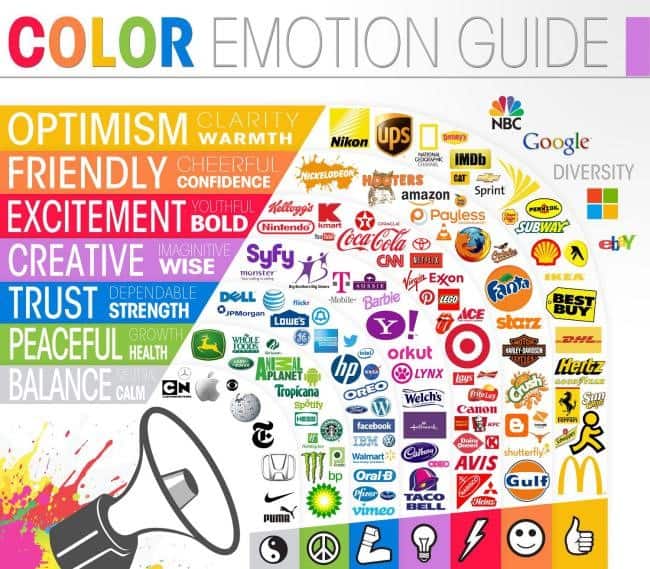Choosing the right dominant color for your brand is crucial. It’s an opportunity to separate your business from the competition and improve your brand recognition. One of most effective ways to accomplish this is through the use of color. Quality, cost-effective color documents can significantly improve brand recognition, drive sales, and leave a positive professional impression with your customers. The color you choose should set you apart and work with your industry and image. Therefore, it’s important to maintain a brand color with customers through any and all printed materials you use.
Colors can mean different things depending on the culture, situation and industry. However, in U.S. advertising, studies suggest company trends and some universal meanings:
Blue: Cool blue is perceived as trustworthy, dependable, fiscally responsible and secure. Strongly associated with the sky and sea, blue is serene and universally well-liked. Blue is an especially popular color with financial institutions.
Red: Red is aggressive, energetic, provocative and attention-grabbing. Count on red to evoke a passionate response, but perhaps not always a favorable one. For example, red can represent danger or indebtedness.
Green: In general, green connotes health, freshness and serenity. However, green’s meaning varies with its many shades. Deeper greens are associated with wealth or prestige, while light greens are calming.
Yellow: In every society, yellow is associated with the sun. Thus, it communicates optimism, positivism, light and warmth. Certain shades seem to motivate and stimulate creative thought and energy. The eye sees bright yellows before any other color.
Purple: Purple is a color favored by creative types. With its blend of passionate red and tranquil blue, it evokes mystery, sophistication, spirituality and royalty. Lavender evokes nostalgia and sentimentality.
Pink: Pink’s message varies by intensity. Hot pinks convey energy, youthfulness, fun and excitement and are recommended for less expensive or trendy products for women or girls. Dusty pinks appear sentimental. Lighter pinks are more romantic.
Orange: Cheerful orange evokes exuberance, fun and vitality. With the drama of red plus the cheer of yellow, orange is viewed as gregarious and often childlike. Research indicates its lighter shades appeal to an upscale market.
Brown: This earthy color conveys simplicity, durability and stability. It can also elicit a negative response from consumers who relate to it as dirty. From a functional perspective, brown tends to hide dirt, making it a logical choice for some trucking/industrial companies.
Black: Black is serious, bold, powerful and classic. It creates drama and connotes sophistication. Black works well for expensive products, but can also make a product look heavy.
White: White connotes simplicity, cleanliness and purity. The human eye views white as a brilliant color, so it immediately catches the eye in signage. White is often used with infant and health-related products.
No matter what color you choose to represent your brand, event or logo, be sure to include the color in all promotional material you use, from posters to flyers to booklets and more! Any local printing company will ensure that the every color is transferred to paper as vividly as you imagined it to look. Replica Printing Services, for example will print a FREE proof to ensure your color is consistent and matching your brand message.
We wanted to know more about the value of color, so we asked our partners at Xerox and this is what they had to say:
• Color improves brand recognition by up to 80%. Marketing pieces stand out with color and help drive sales.
• It takes only 2.5 seconds for people to decide whether to read or reject direct mail and pamphlets – make it count!
• Color makes an impression that’s 39% more memorable. Collateral and direct mail have a bigger impact if they’re in color.
• Color increases comprehension by as much as 73%
In regards to the role that color plays in branding, results from studies such as The Interactive Effects of Colors show that the relationship between brands and color hinges on the perceived appropriateness of the color being used for the particular brand (does the color “fit” what is being sold).
Also take a look at what Marketing professionals have to say, which reiterates the above general responses to particular colors:



